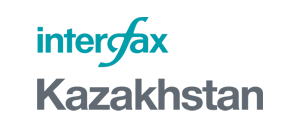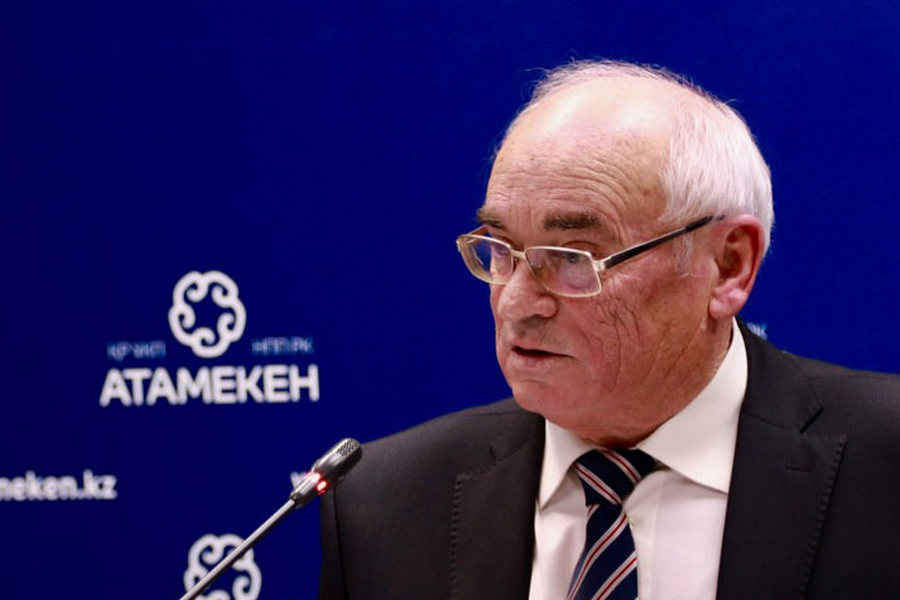EBRD Director for Kazakhstan Agris PREIMANIS:
WE WILL BE WORKING CLOSELY WITH SAMRUK-KAZYNA AND BAITEREK

The European Bank for Reconstruction and Development (EBRD) will adopt a Strategy for Kazakhstan 2017-2020 this summer. The EBRD Director for Kazakhstan Agris PREIMANIS told Interfax-Kazakhstan in an interview about this new strategy, the Bank’s plans for Kazakhstan and shared his vision of the country’s investment prospects.
– You were recently appointed head of EBRD Office in Kazakhstan. What do you plan to start with in this position? Do you plan to revise approaches to the project selection process?
- I was appointed the director of EBRD in Kazakhstan at a very important time for the country, when the government and the business are well aware of the changes that have occurred in the region and the world, which poses serious challenges on one hand and open new opportunities on the other hand. The low oil prices have led to a decrease in the national revenue and adversely affected the economic growth. At the same time, the One Belt, One Road project and other initiatives will allow Kazakhstan to better integrate into the regional and global economies. Facing these new realities, the country is striving to improve its competitiveness and to become more innovative.
I am sure that the EBRD will continue close cooperation with the government and the private sector in development of new investment projects, introduction of reforms and improvement of the investment environment in the country.
We will continue financing private companies in such sectors as renewable energy, manufacturing, agriculture, logistics and mining. Through project financing, the EBRD helps to improve competitiveness of both companies and whole industries. We work both with local and international companies. The mandate of the EBRD, including in Kazakhstan, is to help attract new foreign investors to the country and I am confident that we will be able to achieve even greater success in this area.
As part of the effort aimed at strengthening the role of private sector in the country, the EBRD will be working closely with the national companies Samruk-Kazyna and Baiterek. Our investments in the subsidiaries of these two companies will make them stronger and more efficient, which in turn will help create prerequisites for their privatization in the future. This will also include technical support which will help improve the business environment.
The municipal sector will remain our priority area for investment.
Our team in Kazakhstan is very strong and I am confident that our operations in the country will be a success. The EBRD’s new country strategy for 2017-2021, which is expected to be adopted in July 2017, will give us a strengthened mandate to continue this work.
– What is this country strategy comprised of?
– The draft of the 2017-2020 country strategy was developed for public consultations. This strategy defines the following four priorities for the next five years: balancing the roles of the state and the private sector; broadening access to financing, strengthening the banking sector and developing local capital markets; enhancing inter-regional connectivity and international integration; promoting green economy transition.
Also, the EBRD published a Kazakhstan Diagnostic Report assessing the progress and challenges in developing a sustainable market economy.
The report singles out five key constraints that are holding back private sector growth in Kazakhstan. In order of importance, these are the following:
First, a better defined and executed role of the state and a gradual reduction of state presence in the economy would make the economy more competitive and well-governed.
Second, improved access to finance and a more robust financial sector would support diversification of the economy and make growth more resilient.
Third, the economy’s integration with neighbouring countries and with the wider global economy would be helped by improving the ease of crossing the border, which would improve export opportunities, and by reducing the costs of trade, thus increasing competition.
Fourth, the greening of the economy is a critical requirement for a sustainable growth of private sector, particularly in the long-run, with focused efforts on creating conditions for achieving this required now.
Fifth, improved skills of the workforce are needed to allow the private sector to achieve its potential and make economic growth more inclusive.
– What projects does the EBRD plan to finance in 2017?
– In 2017, the EBRD will continue investing in projects in various sectors in order to support structural improvements in the economy. We reckon that the bulk of the investment will go to infrastructure, transport and logistics, as well as the energy and mining sectors. We will also continue financing the agriculture, logistics, the financial and other sectors of the economy.
The amount of investment in 2017 will depend on the number of projects that would be of a commercial interest and would help develop the economy of Kazakhstan. The EBRD does not usually set any investment targets.
We will also be supporting the government’s reforms, including tariff reforms in the regulated industries and development of the “green” financial system and the Astana International Financial Center. Finally, we will expand our advisory program for all small- and medium-sized enterprises throughout Kazakhstan.
– How big is the EBRD’s project portfolio in Kazakhstan?
– To date, the EBRD has invested 7.4 billion euro in Kazakhstan. The current project portfolio is valued at 2.7 billion euro, of which 42% is invested in infrastructure (transport, logistics, roads, municipal infrastructure and others), 40% in energy and natural resources, including renewable energy, 12% in manufacturing and services, including agriculture, and 6% in the financial sector.
The portfolio includes such projects as the Burnoye Solar Farm, water supply and wastewater treatment and support for female entrepreneurs through better access to financing.
- What are the most attractive industries for investors in your opinion?
- There are great opportunities for the investors in Kazakhstan. The One Belt, One Road initiative, as well as the country’s infrastructure development strategies will stimulate investment in this sector, which in turn will encourage development of logistics and other related sectors.
The agricultural sector has great potential, which has not been fully realized yet., This sector could be attractive for investors too. Investment in renewable energy and energy efficiency also has considerable potential.
This is just a few examples to mention. There are a lot of other sectors that could be of interest for investors, for instance privatization of companies including at the Astana International Financial Center.
The EBRD works actively on projects in these sectors and will support development. We are ready to cooperate with both local and foreign investors in such projects.
– It was said earlier that the EBRD could provide a $140 million loan facility to finance Polymetal’s Kyzyl project. Has the final decision been made yet?
– The draft agreement is in its final stage and I think it will be signed soon. This project is very important both for the EBRD and Kazakhstan and we are looking forward to finalizing the documents in order to provide finances in the near future.
– The EBRD Associate Director of the Regional Program for Small Businesses Support in Kazakhstan and Mongolia Holger Wiefel said that the Kazakh entrepreneurs need affordable financing options. Do you agree with him?
– Businesses need to have access to loans with affordable interest rates in order to finance their growth. For instance, non-resource companies that do not have easy access to such financing face difficulty in developing their business.
There must be a stable monetary policy and a developed banking sector in place to ensure the financing of businesses. As far as the monetary policy is concerned, the National Bank of Kazakhstan has made significant progress over the past few years: a floating exchange rate was introduced and liquidity supply is bouncing back. Further steps aimed, among other things, at increasing long-term liquidity would continue to improve access to tenge financing for the companies.
In addition, the National Bank is now carrying out a series of measures in order to improve the stability of the banking sector, and the EBRD supports these initiatives of the regulator.
At the same time, the companies need to improve their corporate governance and business practices in order to become eligible for financing from the banks. Unfortunately, such practices in many of the companies are not good enough.
The EBRD will continue working towards improvement of the corporate governance practices and other aspects through investment projects, will keep working on reforms and will support the National Bank’s efforts to strengthen the monetary policy and the banking sector.
– What is the EBRD’s forecast for Kazakhstan’s economic growth?
– The EBRD expects the economy of the country to expand 2.4% in 2017 and the inflation to come in at 7.8% on average, which is within the expected corridor of 6-8% set by the National Bank of Kazakhstan.
– Thank you for your time!
May, 2017
© 2025 Interfax-Kazakhstan news agency
Copying and use of these materials without reference to the source is prohibited
Archive





